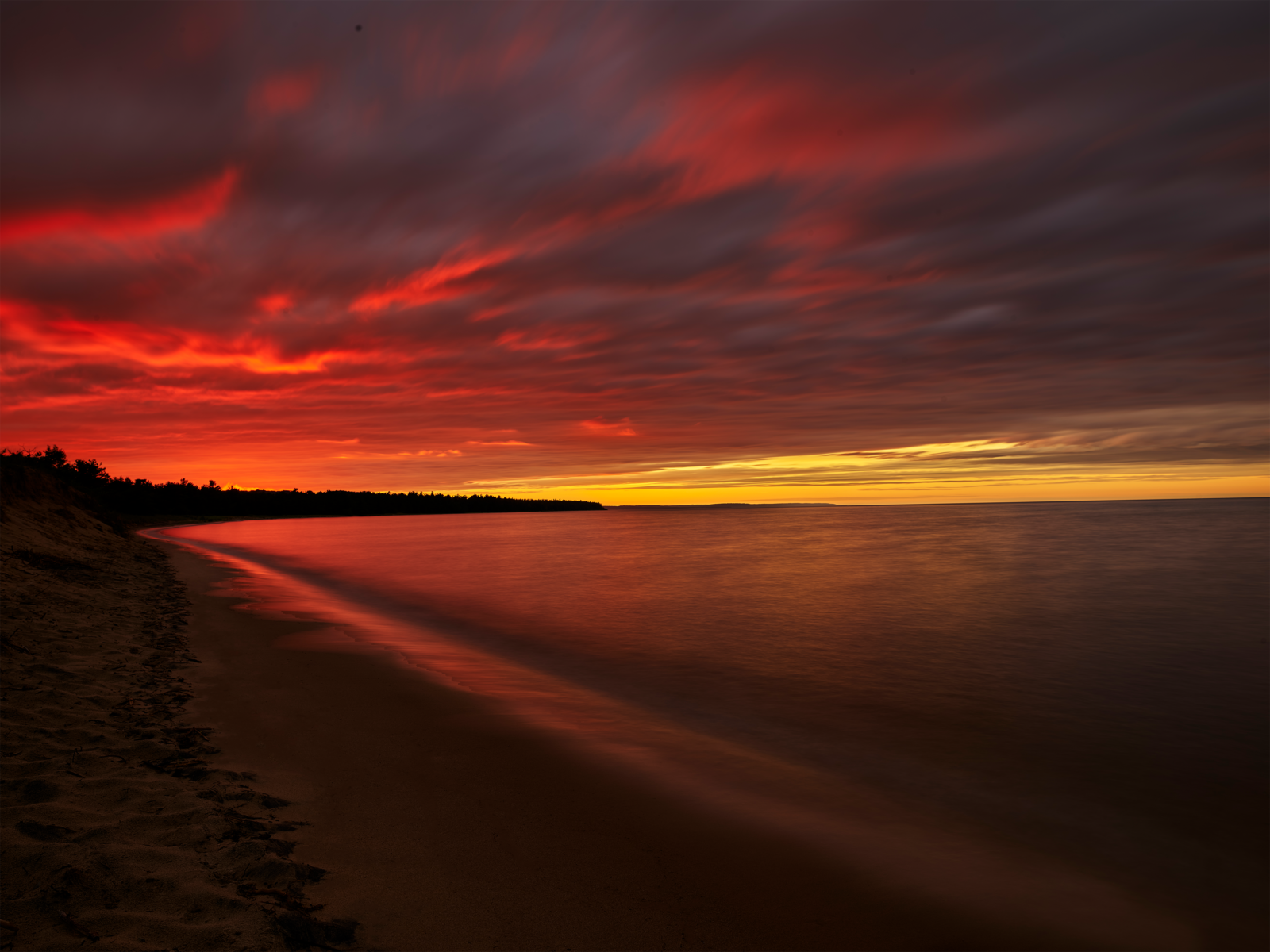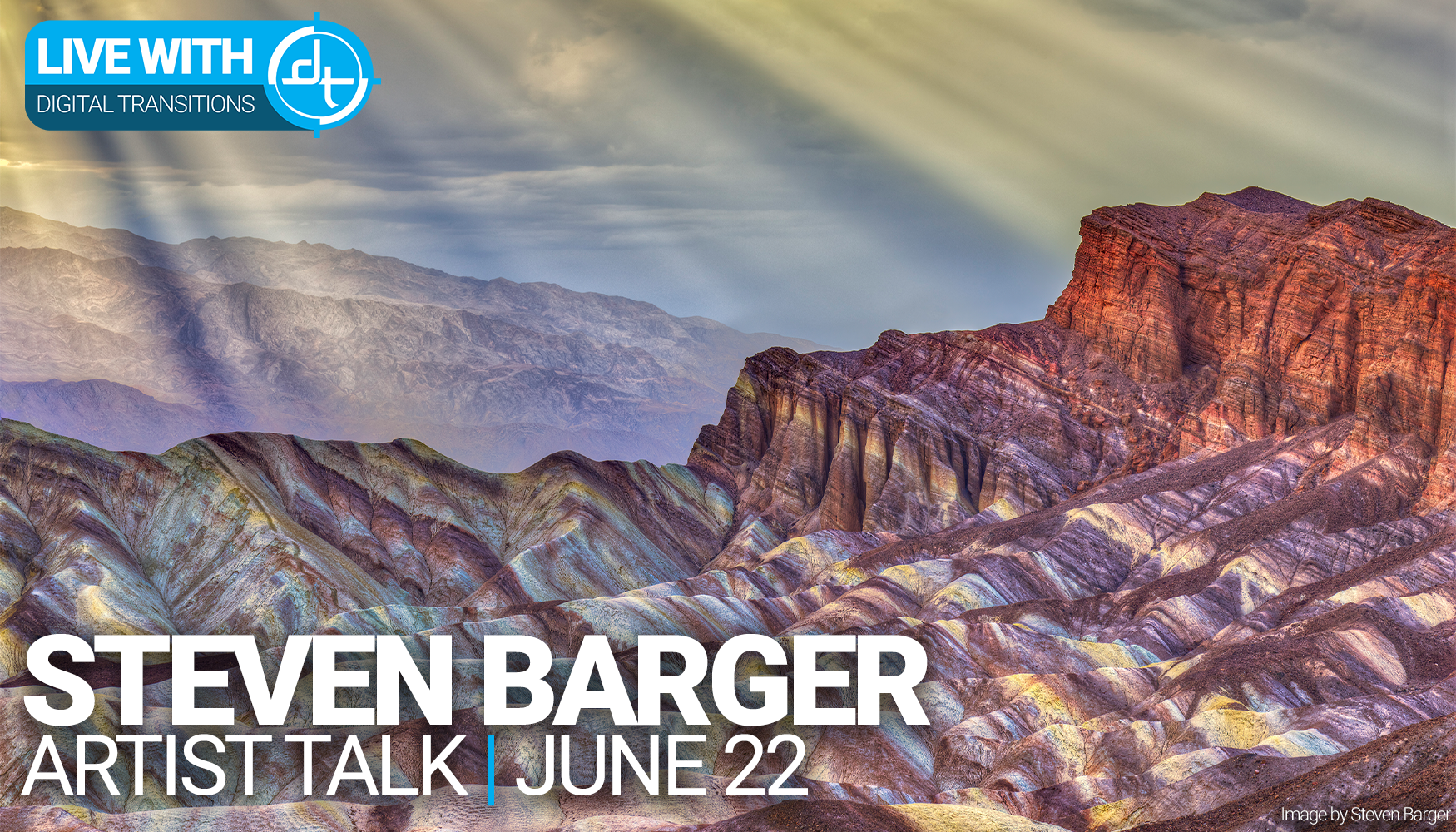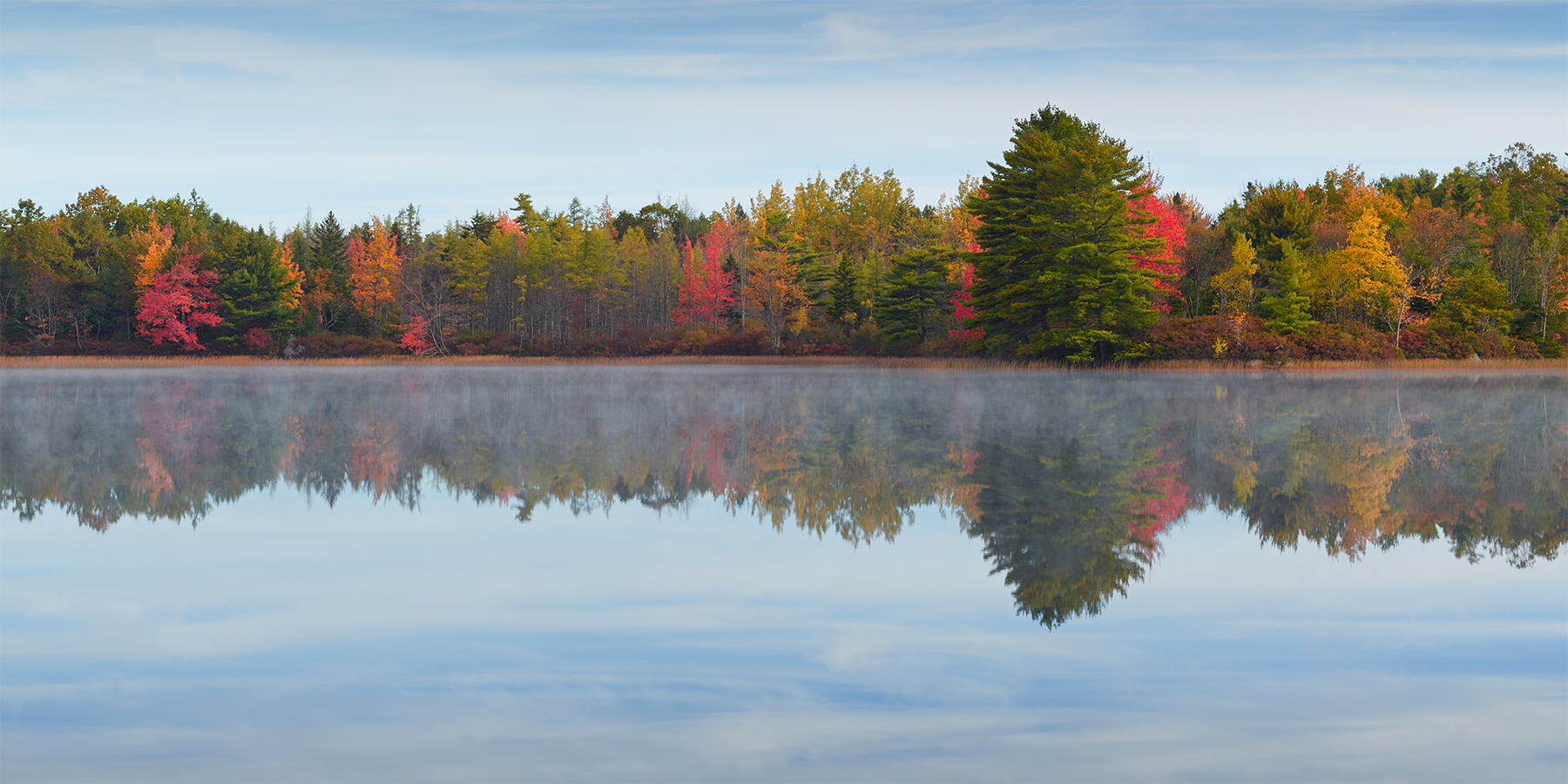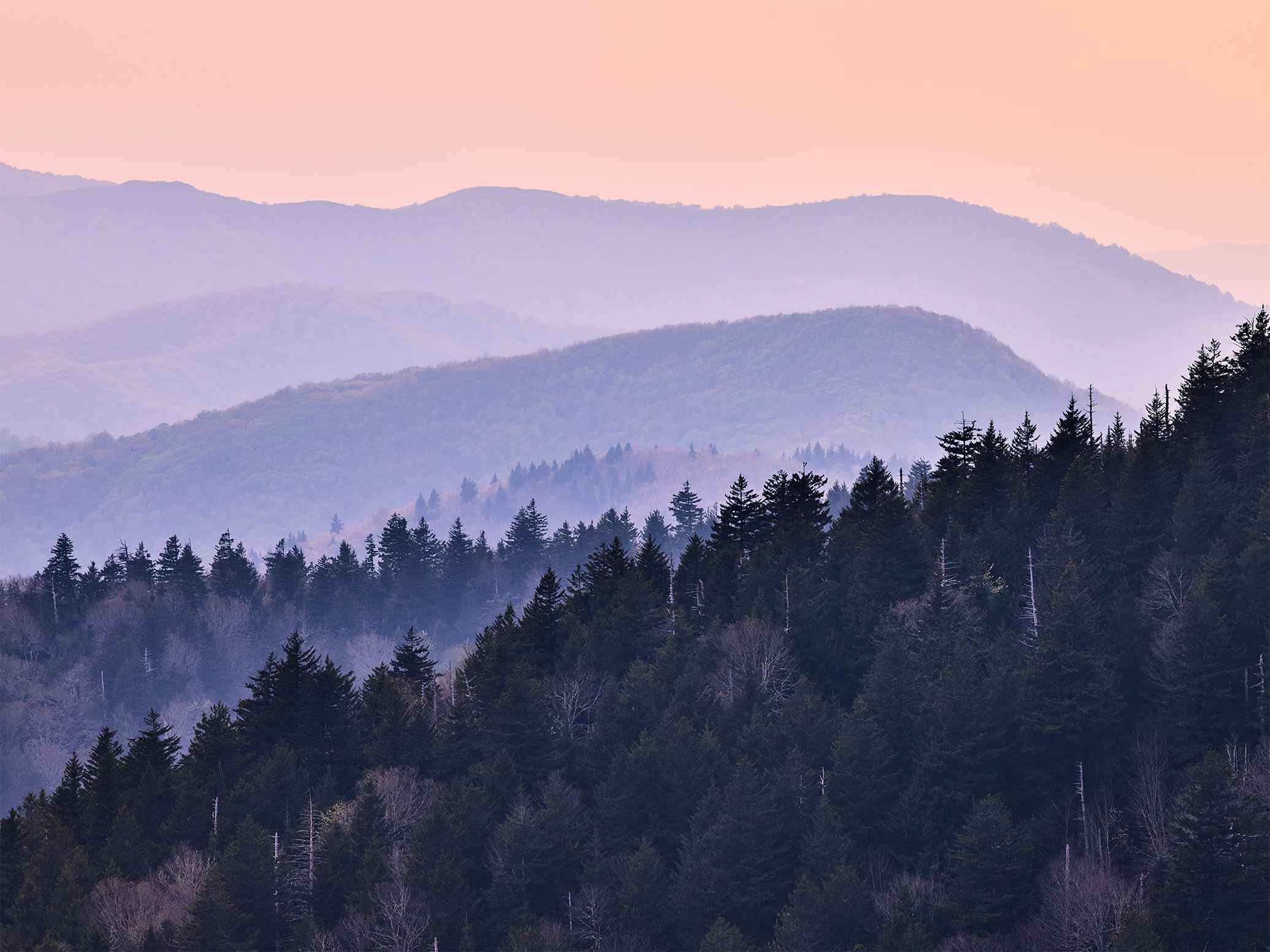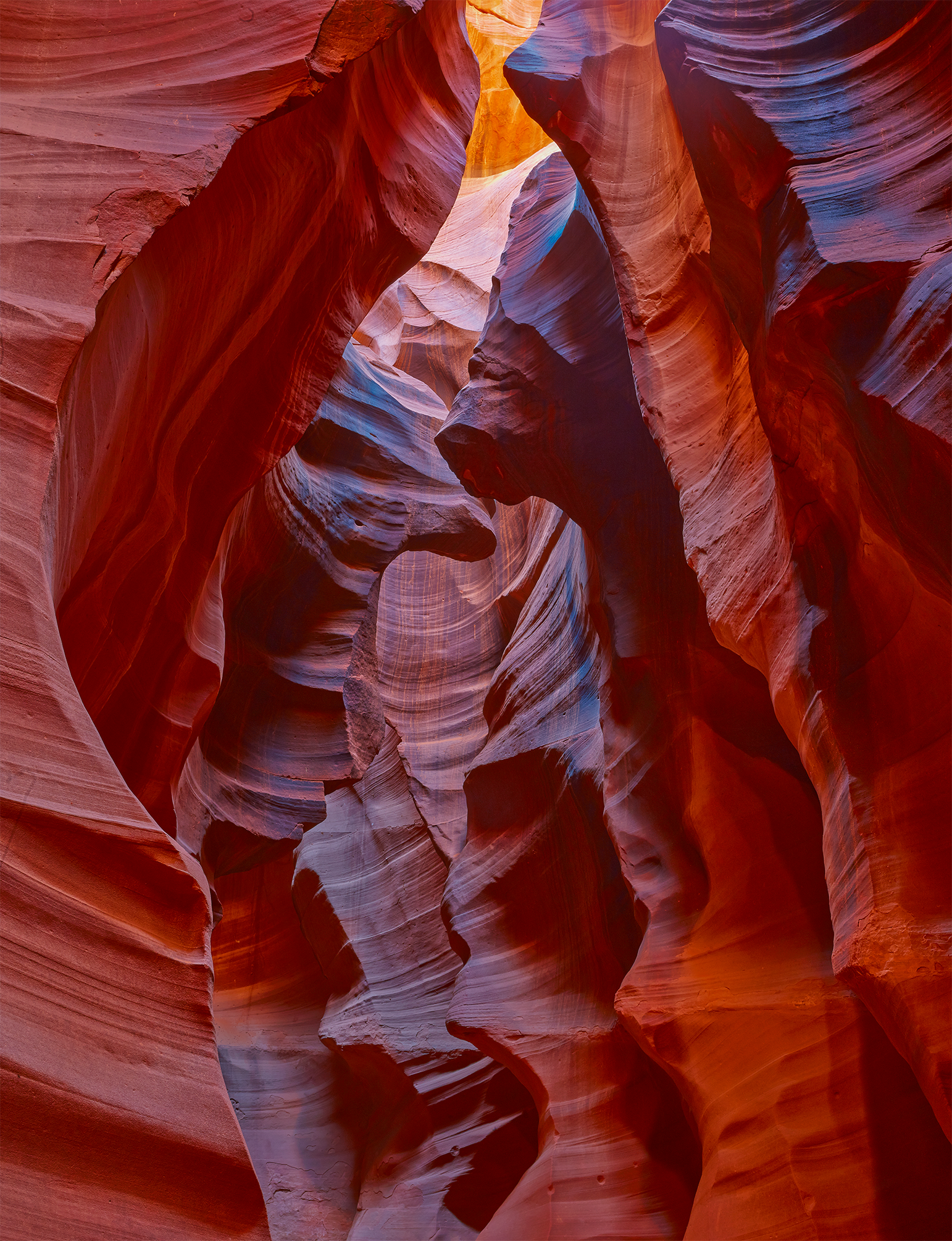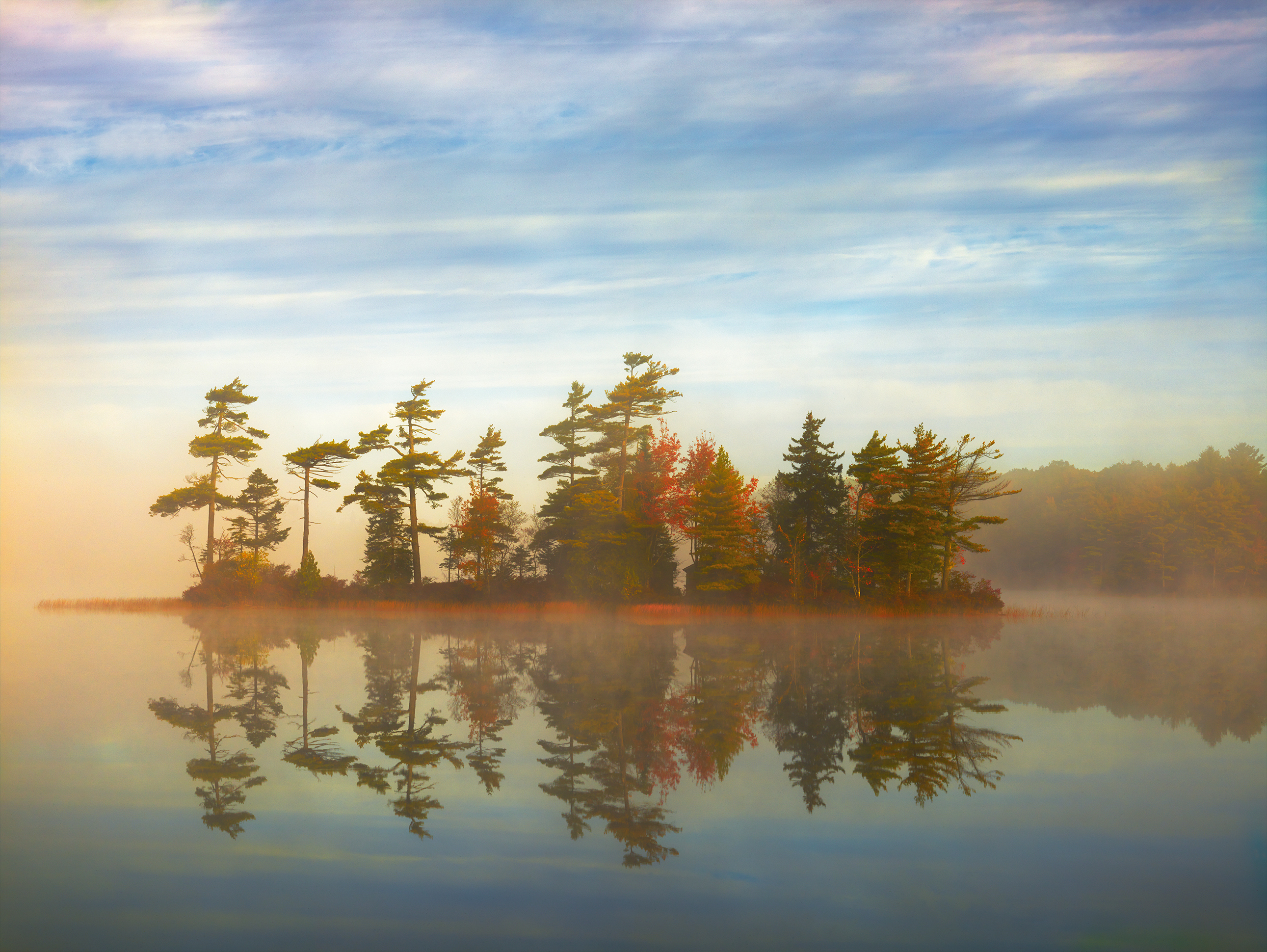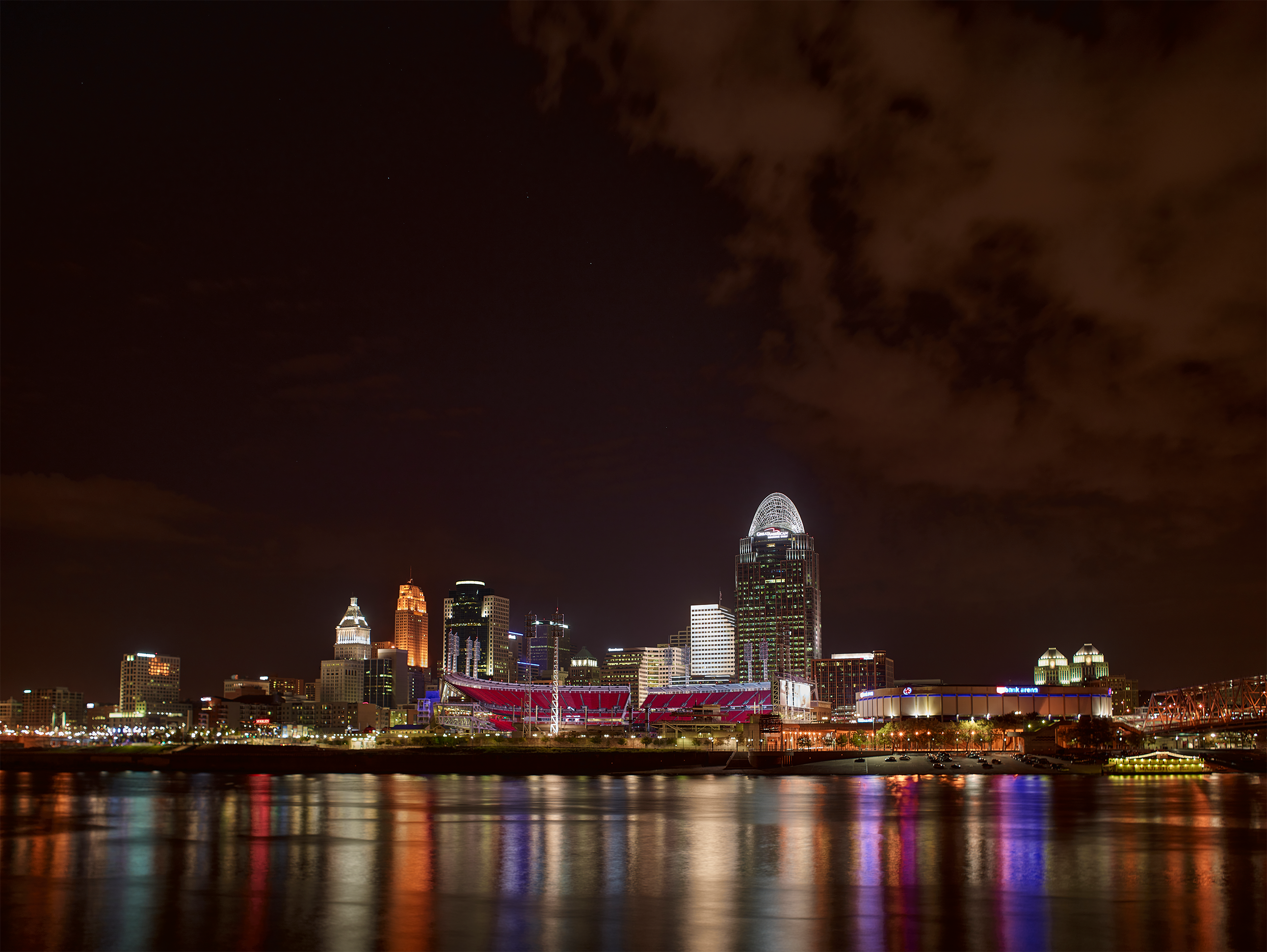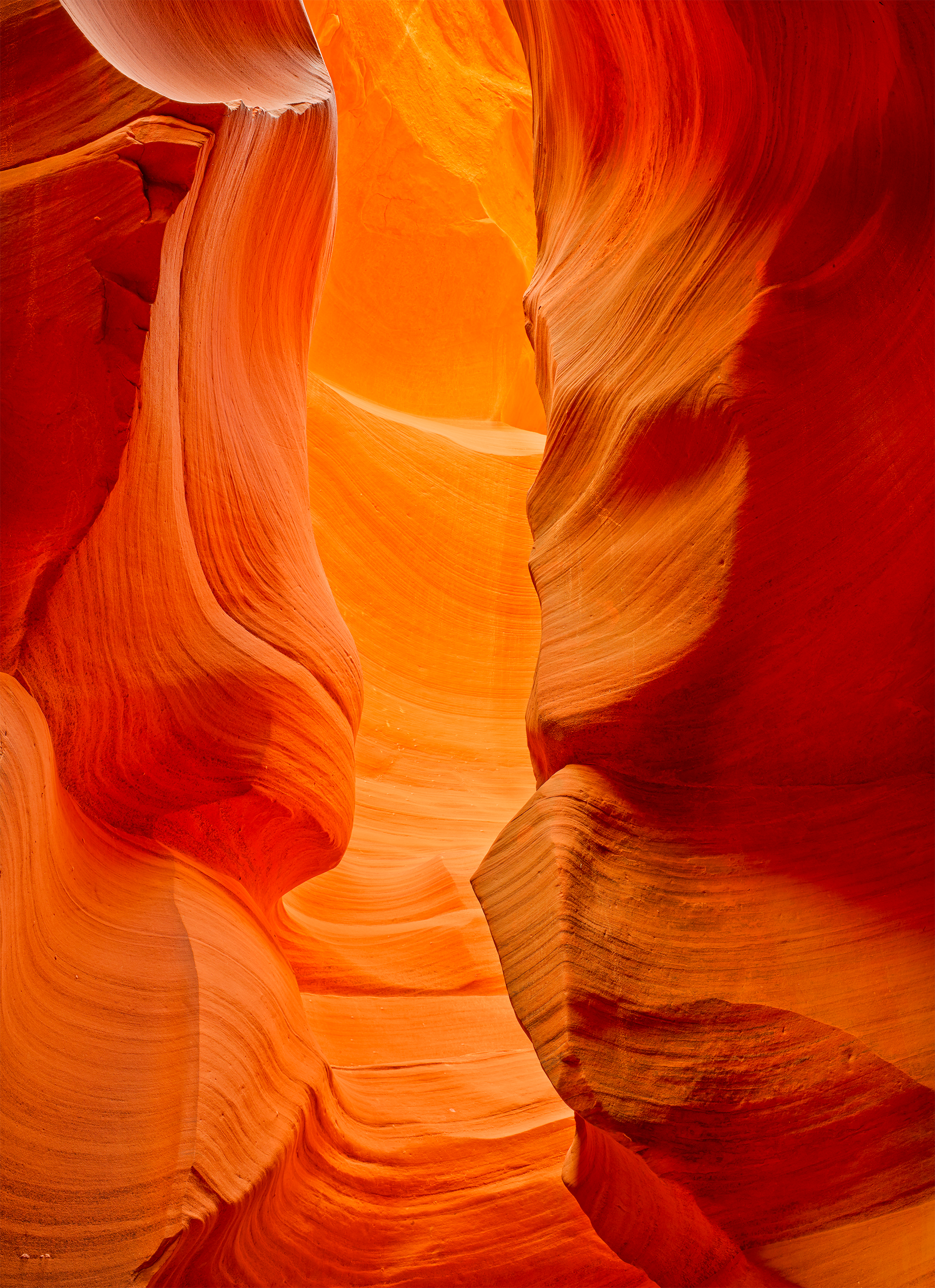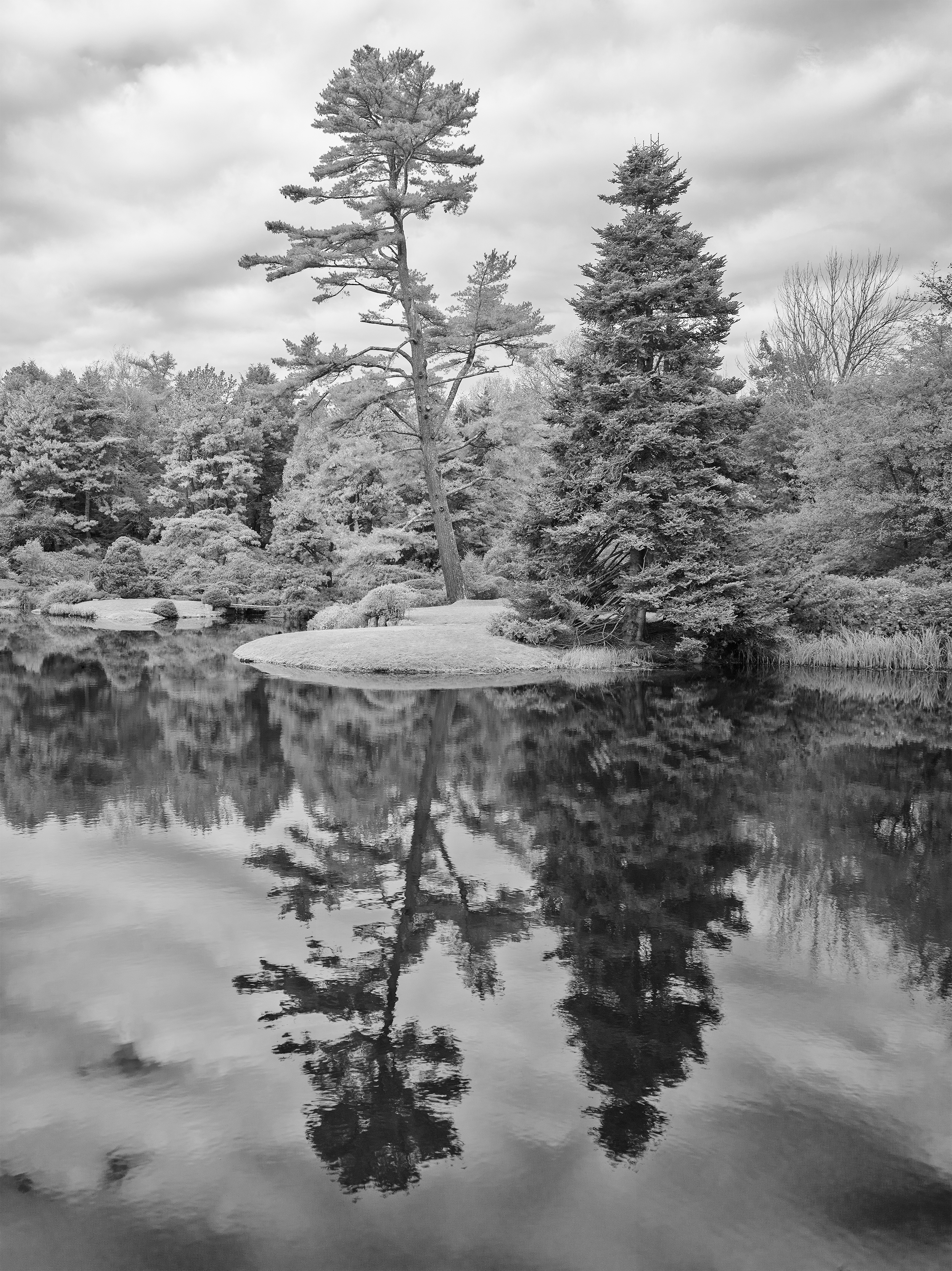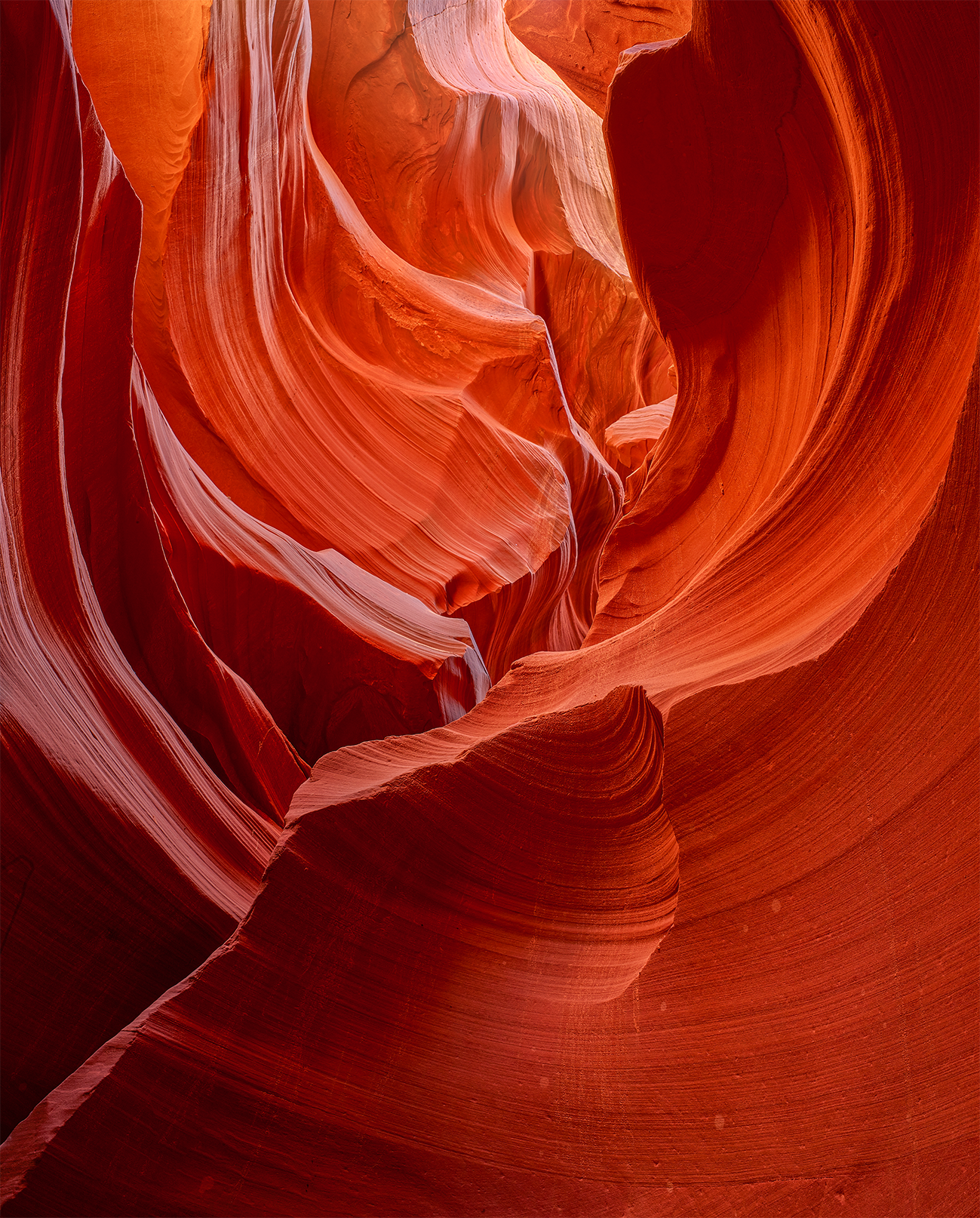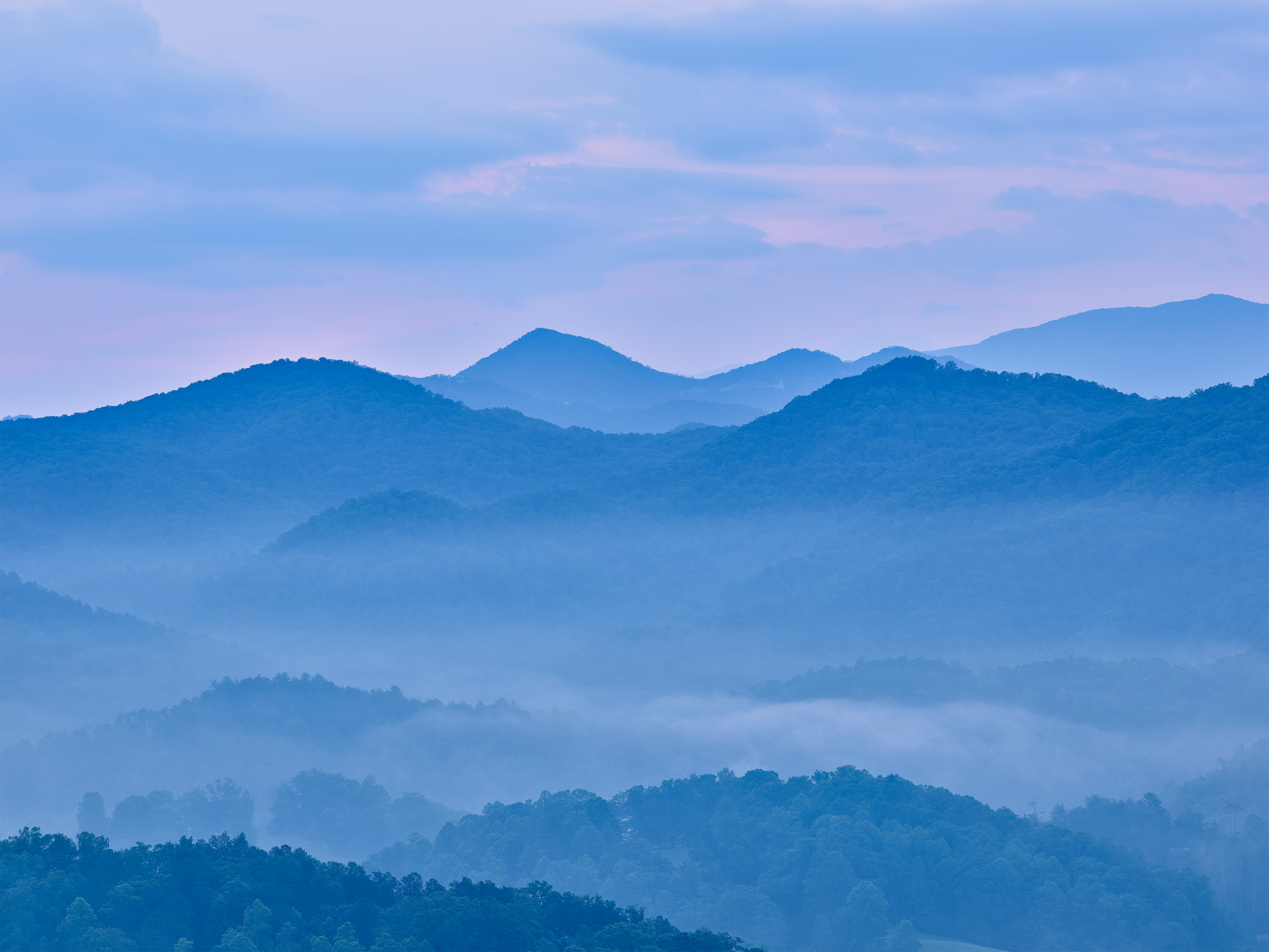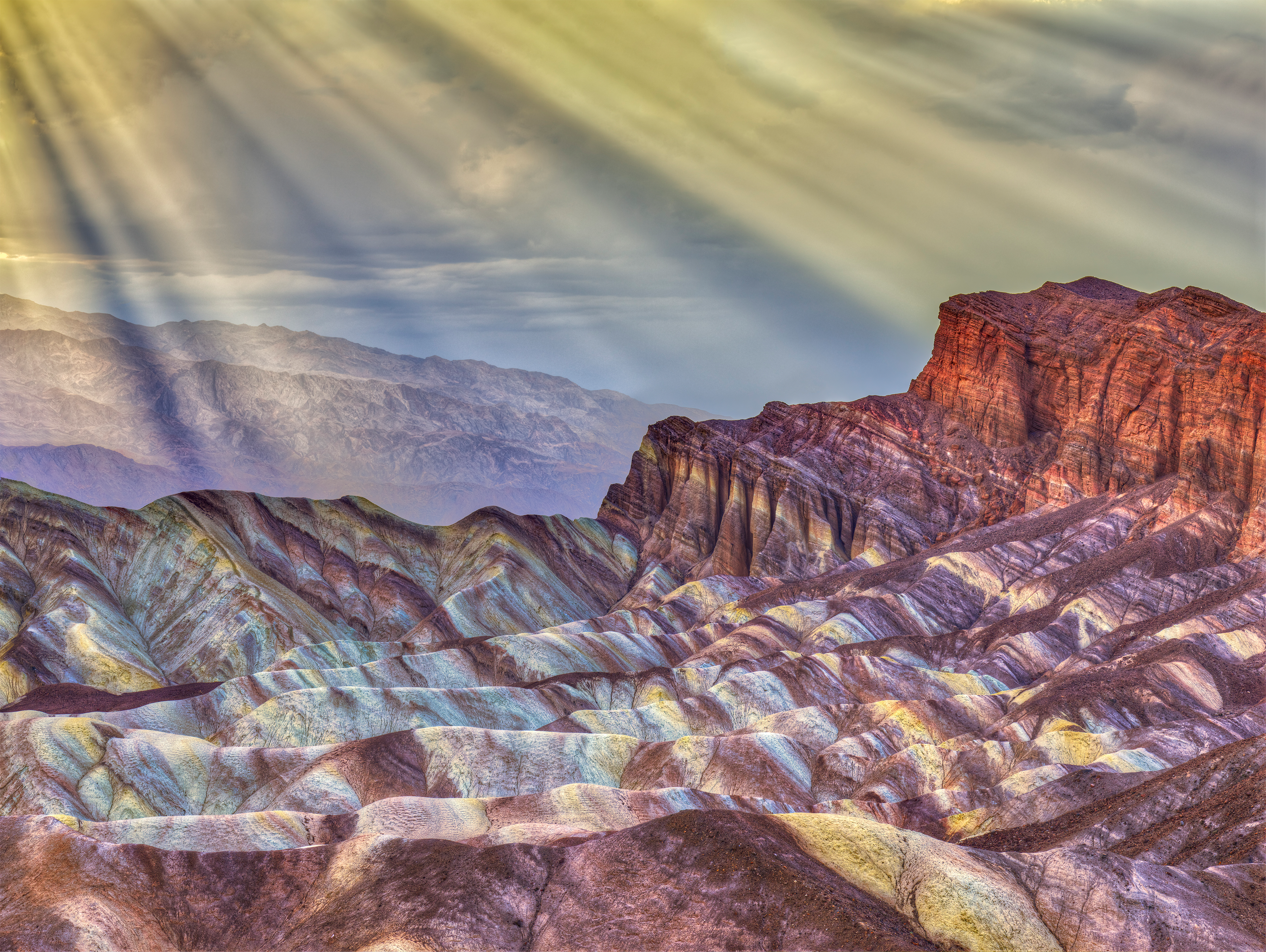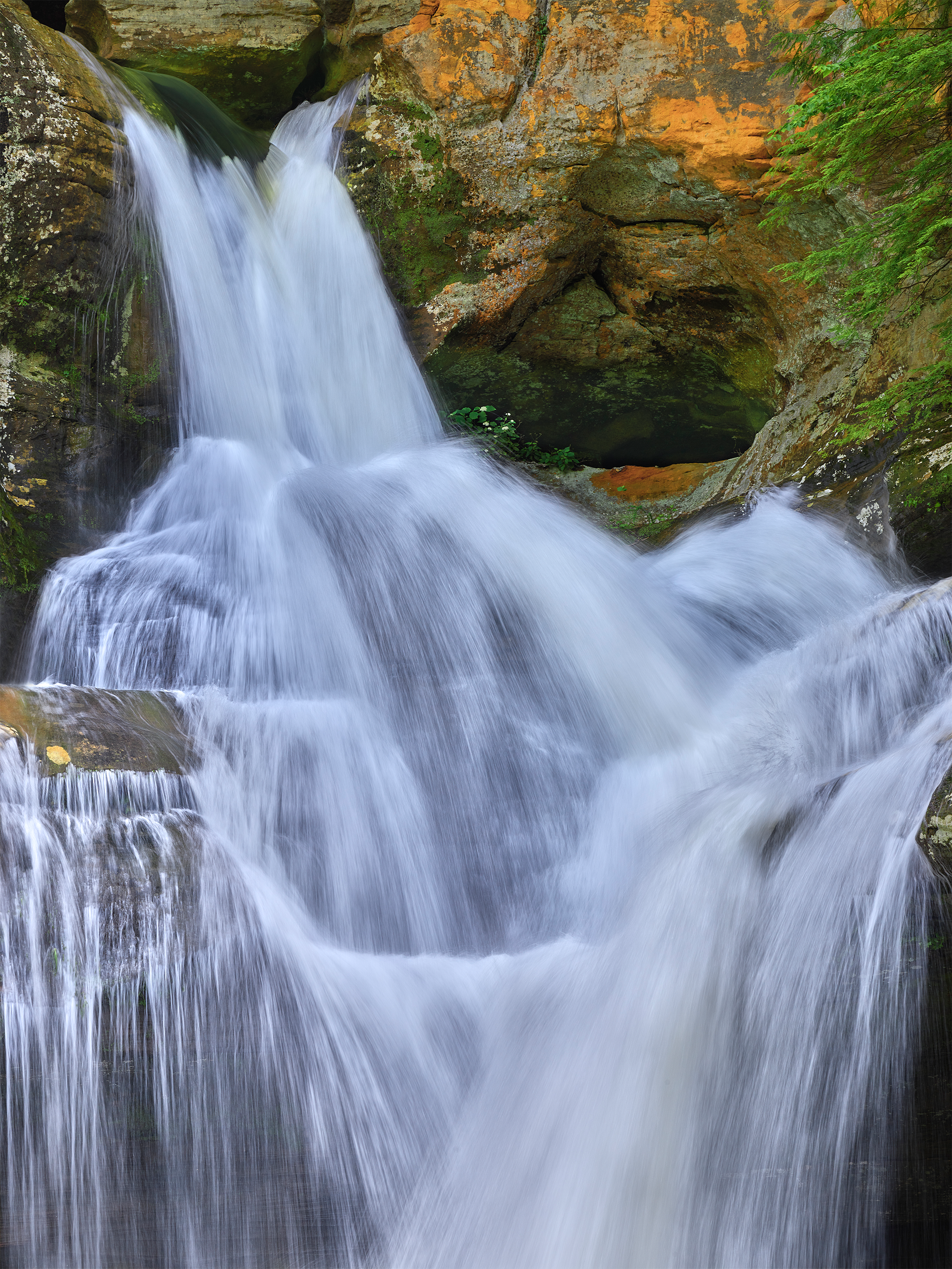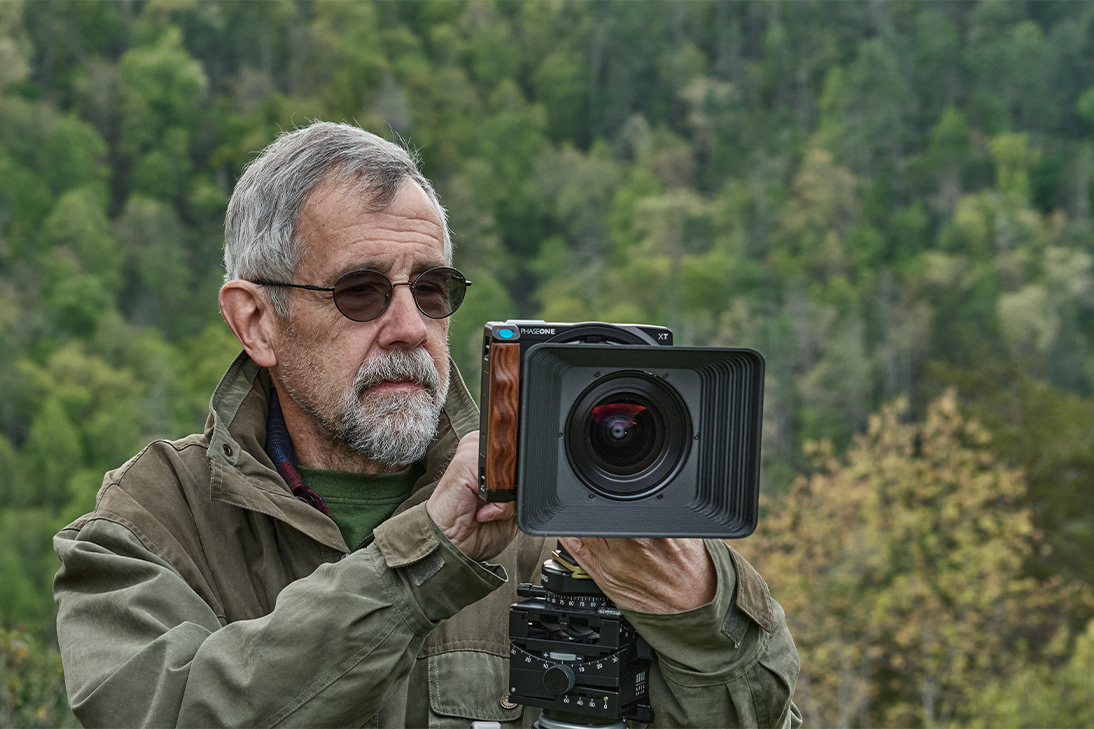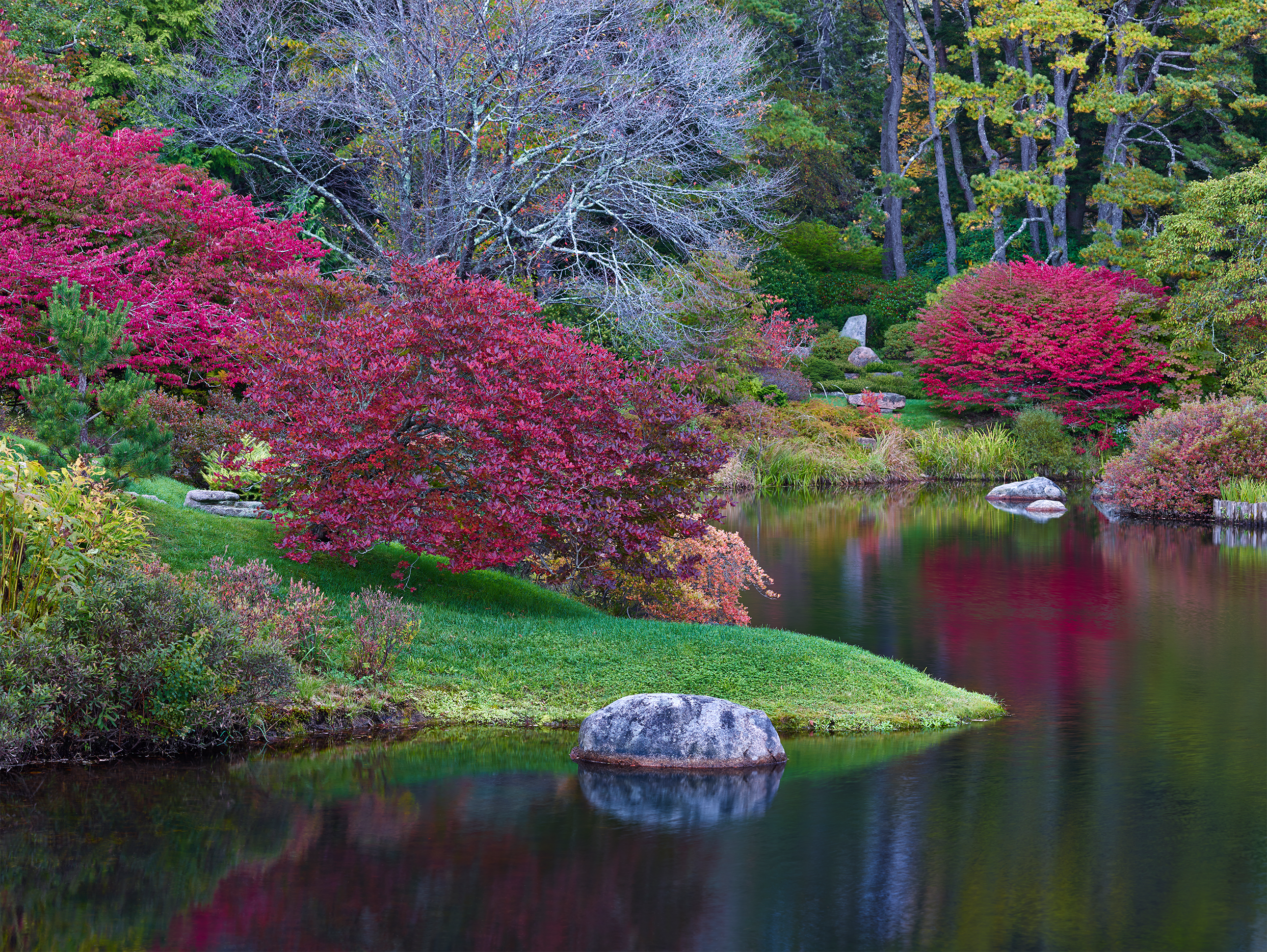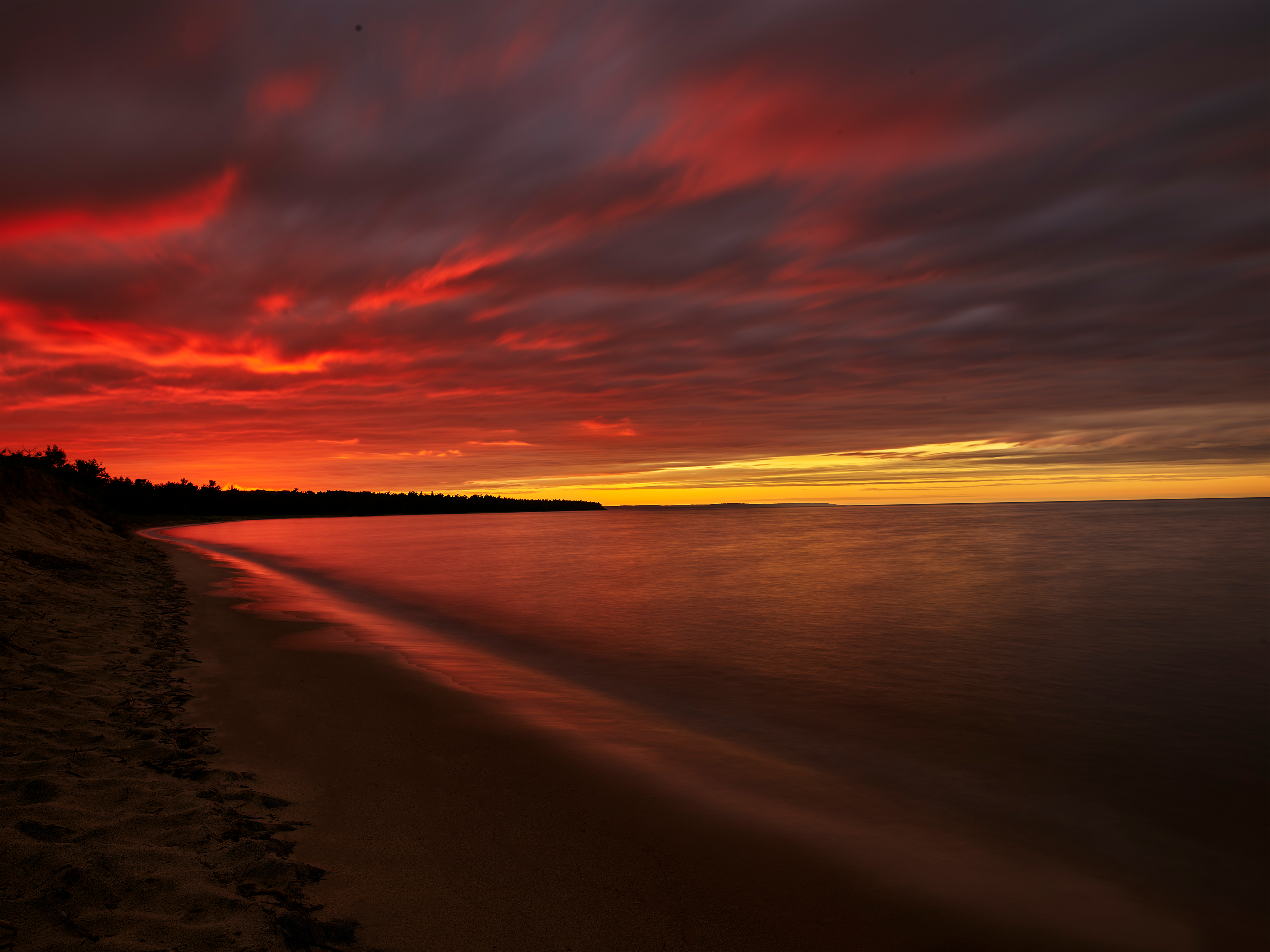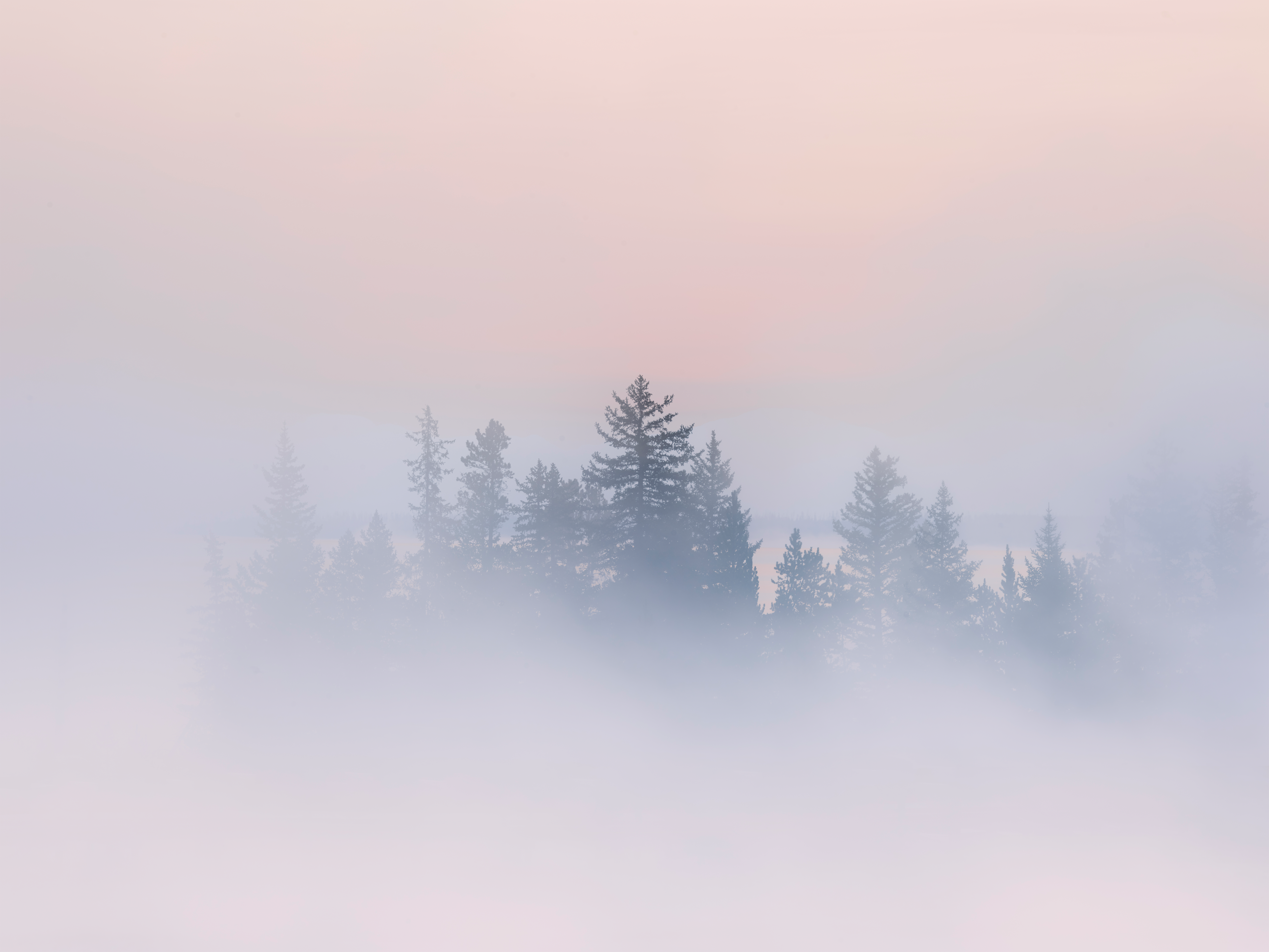Digital Transitions, Featured Photographer, Photographer Profile
Featured Photographer – Steven Barger
This month we are featuring the incredible work of landscape and wildlife photographer, Steven Barger. Steven’s travels have taken him from South Africa, Namibia, and Tanzania, to the arctic ice floes of Svalbard, Norway, and Iceland. Alaska has been a favorite locale, as well as many U.S. National Parks, including Acadia, Arches, Rocky Mountains, Yellowstone, and the Great Smoky Mountains.
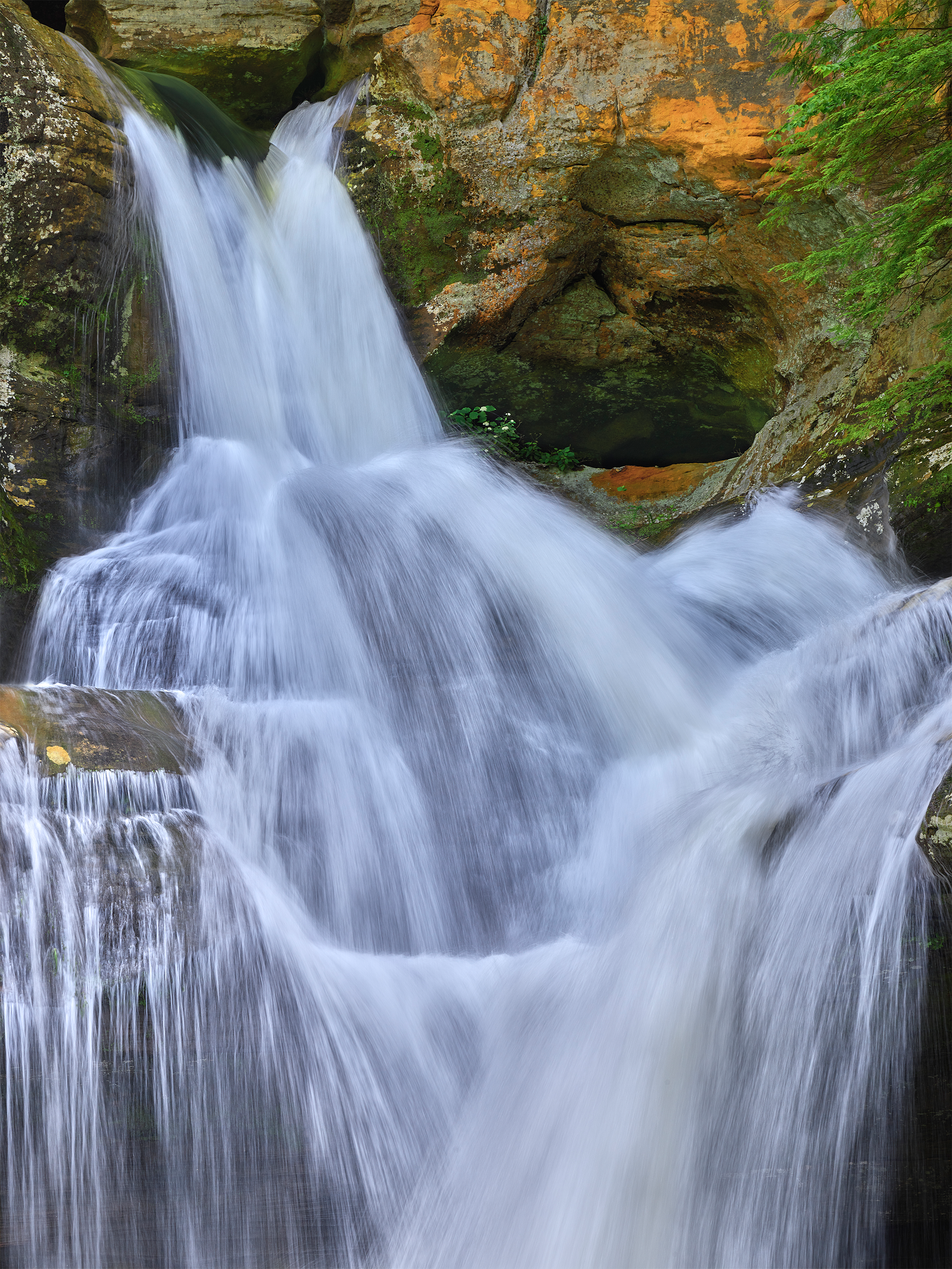
Describe your approach to photography— What makes your work unique?
My approach to photography – keep it simple. My background is engineering, so I am technical by nature and training. The technical part of photography is second nature. When behind the camera, I concentrate on the image, not the mechanics, and visualize the image and what it will look like printed. I ask myself what draws me to the subject. I want the viewer to experience what I felt when capturing the image.
Since I am both a landscape and wildlife photographer, I strive to show, in my photographs, the natural world in a way that most people will not experience.
My definition of a good image is one that is simple, there are no competing elements. The image must stand out in the picture; isolated from the foreground and background. The viewer’s eye is led immediately to the subject. I accomplish this with light, tone, complementing colors, and depth of field.
What inspires you? Who are your influences?
My inspiration springs from my love of the natural world and desire to aid in its preservation through my photography. My goal is to provide the viewer a personal connection with nature and a greater appreciation of, and respect for, the natural world and the need to preserve it for future generations.
The number of photographers who have influenced me is much too long to list here. But there are three that stand out. The first, Ansel Adams, should come as no surprise. When I first began in photography, I studied his images, paying particular attention to the light, detail, and composition of each image. I read extensively about his style, approach, technique, and equipment used. Next is John Shaw who is a generalist. I found inspiration in his landscapes, macro, and wildlife photography.
His images taught me about simplicity. Finally, is master printer Charles Cramer. Before taking one of his workshops, I struggled with printing my images. Although my prints were good, I was unable to reproduce the impact seen on the screen in the final print. I knew it was not a product of the difference between a front light print vs a backlight screen issue but was the result of a flaw in my printing workflow. During the workshop, Cramer focused on proper image preparation for print as well as the printing process. He taught me to visualize how the image will look when printed. To achieve the result I wanted to require only subtle changes.
What was your first camera?
My first camera was an old manual focus film camera, a Minolta SRT 101 with a 50mm lens. Immediately after purchasing the camera, naively thinking that it can’t be that hard to take a good picture, I decided to photograph a sports car show at a local shopping mall. There was not one image properly exposed and in focus, not even mentioning how bad the images were composed. So began my journey in photography.
Can you think of the first time you realized the camera you owned was holding you back?
As my photography progressed, I found myself taking images predominately of birds and wildlife: occasionally a landscape image was thrown into the mix. While I was successfully selling my work at juried art shows, I wanted to expand into the gallery market. To do this, I realized that I needed to broaden my portfolio to include more landscape images. Photographing landscapes would require less emphasis on autofocus speed and frame rate and more emphasis on dynamic range, signal to noise ratio, camera processing engine, resolution, and options for using a technical camera.
I would also need to offer prints in much larger sizes. Since I would continue to photograph and market images of birds and mammals, it was clear that one system would not work, I would need two systems to achieve the best quality image for presentation to galleries. I would continue to use my existing 35mm system that I was familiar with to capture bird and mammal images. I would then add a medium format system to my photographic tool kit for the file quality needed for my landscape images.
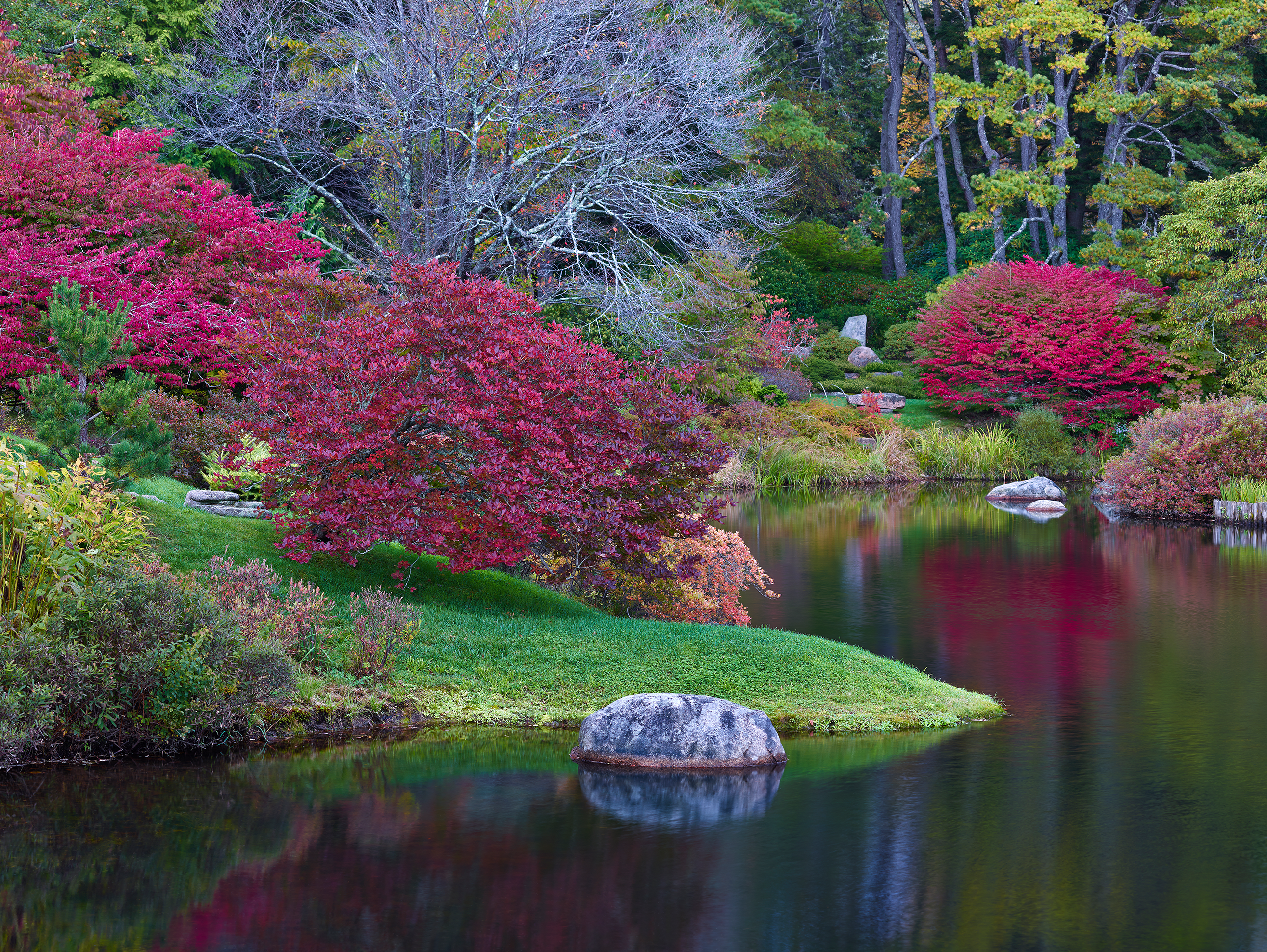
Describe your experience with DT and why you chose to shoot with Phase One gear.
After deciding to use medium format digital equipment for my landscape photography, I proceeded to research the options available. At the time, there were three or four choices. To move to the medium format would require a significant investment. I needed guidance before making my final decision on which brand would best fit my needs, someone with knowledge of the medium format systems, who would take the time to listen to my requirements, and present a recommendation based on these requirements.

Enter DT and Jeff Lin. Jeff was able to help me understand the available options, so in the end, I was confident that the Phase One system would best meet my requirements. DT proved to be knowledgeable, highly customer-oriented, and willing to make recommendations solely based on the customer wants and needs.
In the end, I chose Phase One because of the image quality of the files produced by their digital backs, selection of lenses, dealer network, support, and Capture One software.
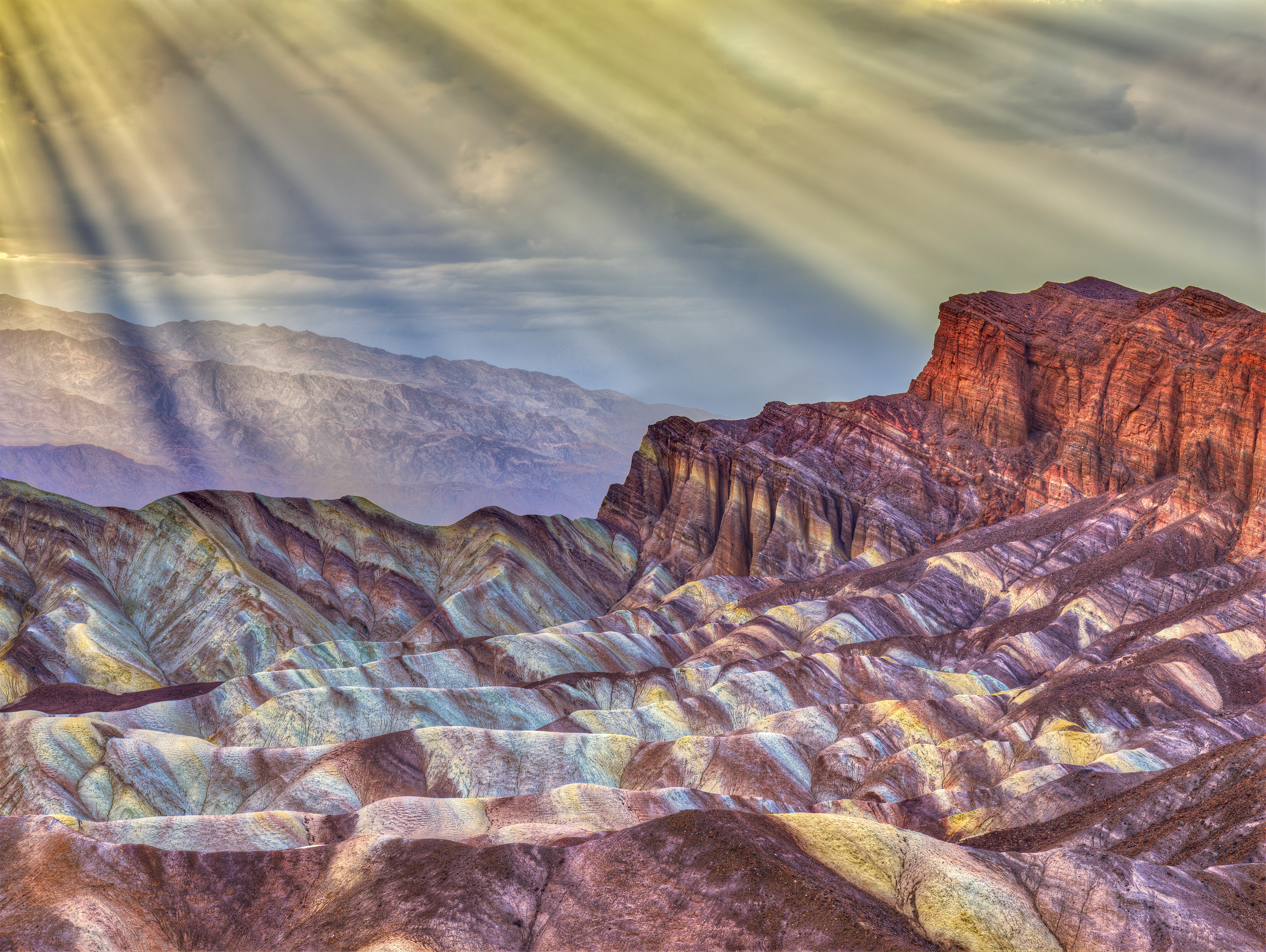
Tell us about one of the photos you’ve provided. What technical decisions did you make to achieve your goal for this photo?
This image was captured in Death Valley National Park a couple of years ago at a location called Zabriskie Point. The area was at the bottom of a lake several million years ago. During this time saline mud, gravel, and volcanic ash deposited sediments at the bottom of the lake. When the lake dried up, the landscape was left covered with the colorful banding seen today. Photographically, I find this area intriguing and made a couple of visits to Zabriskie Point during my visit to Death Valley. Late one afternoon, the light on the terrain was particularly interesting, highlighting the banding and the different colors of ore in the ground. After about an hour of photography, the sky suddenly became covered with clouds and the light flat and uninteresting.
Since the cloud cover showed no promise of the light improving, I decided it was time to pack up and move on. Having safely stored my camera gear in my backpack, I began to walk back to my vehicle. For some reason, I decided to take one last look over my shoulder at the area I had photographed. To my surprise, the sun had broken through a small opening in the clouds and sun rays were illuminating the colorful banding in the landscape. Knowing this would make a spectacularly dramatic image and the sun with its rays would not last very long, I quickly stopped, set up my tripod, and grabbed my camera and the first lens in my pack that I could get my hands on, carefully mounting the lens to camera then attaching it to my tripod.

It’s times like this when rushed, that mistakes are made, equipment dropped, and damaged. Since I was shooting with an XF camera body with IQ4 150 MP back and Schneider-Kreuznach 40-80mm lens attached, a miscue on my part would, most likely, not only result in a lost opportunity to capture the drama before me but create a financial burden on my bank account. So, I again reminded myself to slow down and concentrate on what I was doing. The lighting conditions created a wide range of tones and I knew that I would not be able to expose as metered. I made an educated guess at what I thought would be good exposure and took a couple of images. The exposure was good but the composition was terrible.
It was obvious that I needed more focal length to optically extract the sun rays and landscape to more effectively draw the viewer into the image. Since the light and the sun rays had not changed, and knowing that I had used valuable time shooting with the wrong lens, I decided to quickly, but carefully, change to a 150mm lens and reshoot. I was able to get two more images that I was pleased with before the sun went behind the clouds. Looking at the cloud cover and the late hour in the day, I was confident that the shoot was over. The image is shown here titled “Ablaze” is the image that I am the most pleased with. The sun rays as they appear in the image were amplified in part by the presence of sand, salt, and dust particles in the air. The angle of the light leads the viewer into the image. All in all, I think it made for a very dramatic, unusual, and interesting image.
What was your most difficult project?
I have photographed in the remote arctic regions of North America and northern Europe. The logistics of travel in the arctic can be very complex requiring several days of travel using small aircraft or helicopters with severe cargo weight restrictions. These restrictions are typically in the 50-to-70-pound range, including clothing. It is imperative that I spend time carefully considering first the clothing that will be needed, then based on the subjects that I will be photographing, what essential camera gear will be needed. The total weight for all this must be below the maximum weight allowed.
A major component affecting the weight is the amount of fuel needed for the flight. I remember one long trip by helicopter deep into the Yukon Territory where the pilot made a stop to refuel halfway into the trip. He had stored several 55-gallon barrels of fuel at an isolated location on the tundra.
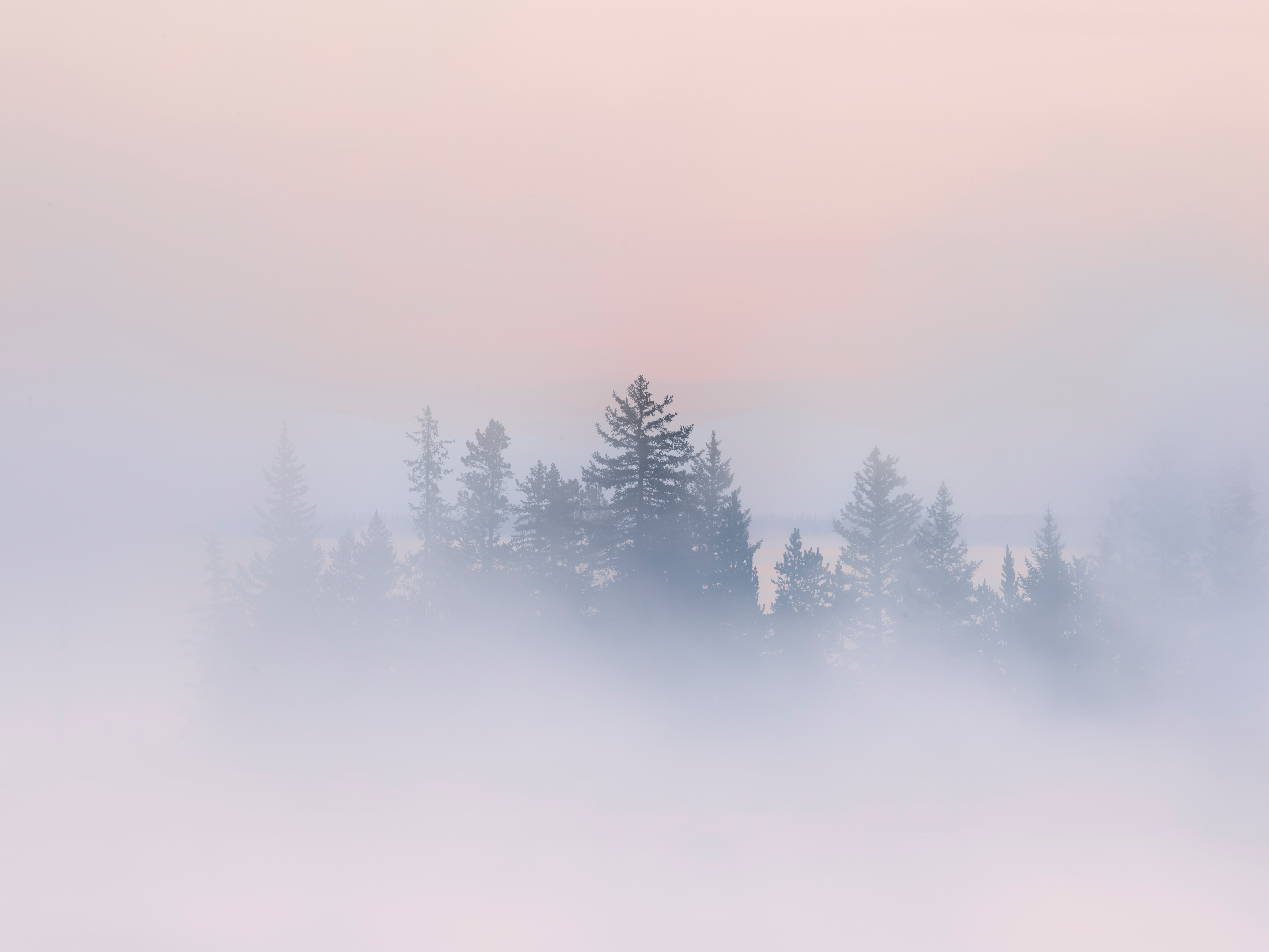
How did you make the transition to professional photography, and how did making a living from photography impact your style of shooting?
My transition was slow and methodical. After making the decision to pursue the path of professional photography, I started displaying and selling my images at local juried art shows. Wanting to keep travel expenses to a minimum, I restricted myself to shows within a day driving distance. I expanded my product offerings to include images ready for wall hanging and mat prints of various sizes and quickly became profitable. After doing these shows for a couple of years, I decided this was not the direction I wanted to take long term.
The time to set up and tear down each show was time-consuming, there is weather risk when doing outdoor shows, and there is a risk of damaging images. I decided to replace art shows with gallery exhibitions. Starting with four local galleries, I expanded outside the local area and now exhibit in galleries throughout the United States. I also have my own gallery located in an old converted warehouse.
I do not think that my transition to professional photographer affected my style of shooting, aside from expanding my portfolio to include landscapes. Now I am more critical of my field technique, image selection, and processing, careful not to overdo the latter.
If you had to do a project using the bare minimum of equipment, what would you bring?
Thinking about this in the extreme, as good as smartphone cameras are, I would bring only a smartphone. More realistically, if this were a project involving landscape photography, I would bring a camera, zoom lens in the 40-80mm range, and tripod.
What’s the most interesting/surprising/invaluable thing you keep in your equipment bag?
Given my propensity to travel to remote regions, this would be a Garmin inReach. This small handheld unit uses satellite communication technology to send and receive messages, provide GPS coordinates, and trigger an SOS signal if emergency response help is required.
What is one thing you wish you knew when starting out?
The amount of work involved, and this is not referring to behind-the-camera work. It is the time required to review and catalog images, correspond with galleries, prepare images for shipment, keep an inventory of the images at each gallery, research new locations, and subjects to photograph, plan photographic trips, and study the latest advances in equipment, photographic techniques, and software updates.
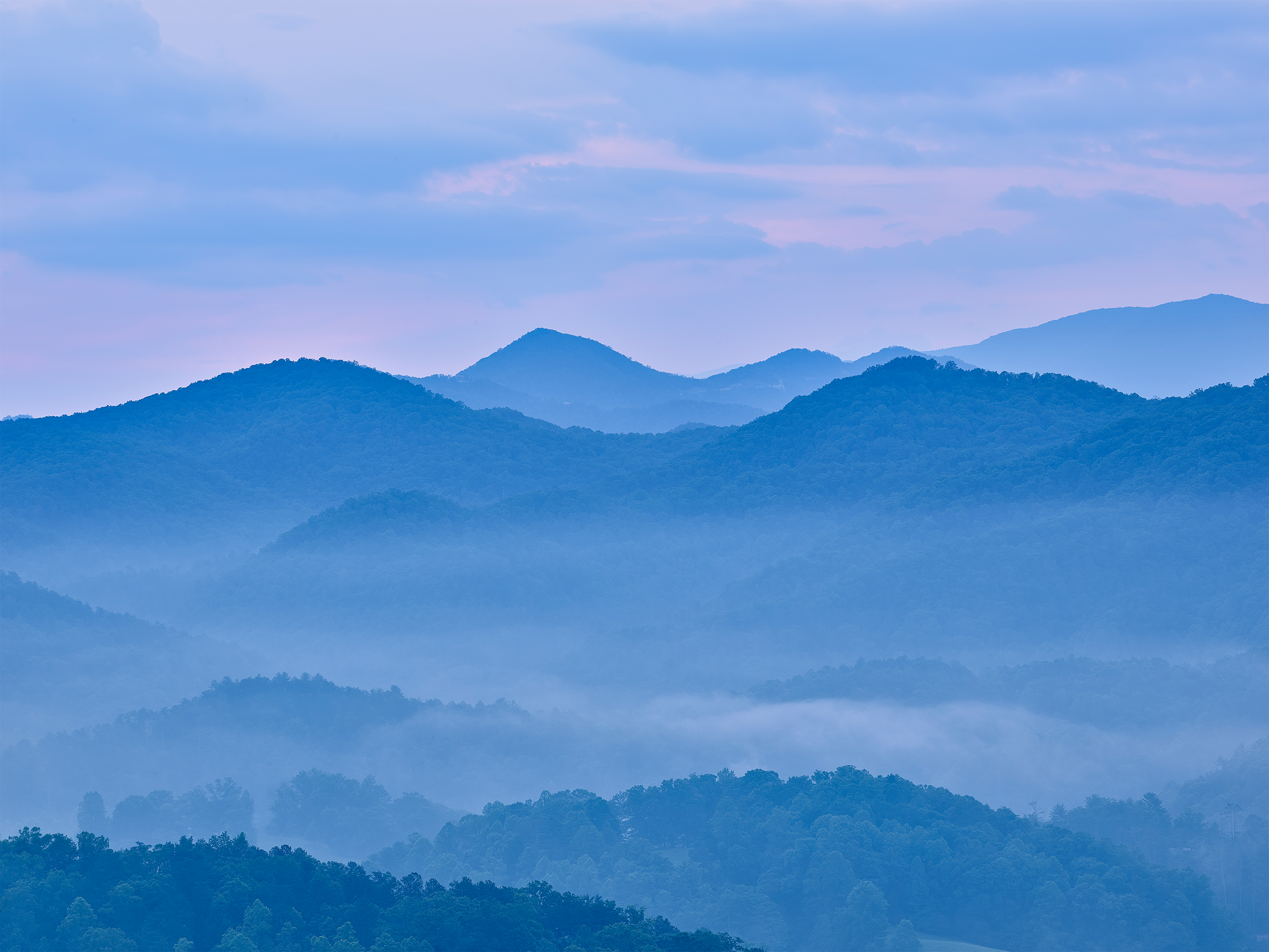
Do you have a “passion project” that you enjoy working on in your free time?
I have always enjoyed night photography which includes star trails and the Milky Way. In the past, I have used 35mm equipment. I am now testing medium format equipment for image capture. There were some challenges to overcome using medium format, but so far, it looks promising.
What’s your favorite activity or hobby outside of photography that you’ve experienced recently?
Last summer, we decided to sell our home in the city and move to a peaceful location some 20 miles in the country. Our house is secluded on 6 plus acres of wooded land with reasonably dark skies. Given my interest in the night skies, I decided to purchase a refractor telescope designed for viewing and photographing deep-sky galaxies.
There is a pretty steep learning curve, but given time, I plan to adapt this telescope so that I can mount my Phase One equipment for deep sky astrophotography. Although this started out to be a hobby outside of photography, I think that there will eventually be a spot for astrophotography in my photo business.
You can see more of Steven’s work or on his website, Facebook, and Instagram.
Want to learn more about Steven? Join us for our live artist talk!
Hear directly from this month’s DT Featured Photographer, Steven Barger on June 22nd at 2:30 PM ET. Steven will discuss his passion for photography and the subjects he shoots, along with his extensive background and technical processes.
You can register for the webinar here.
More details to be announced.
GALLERY

